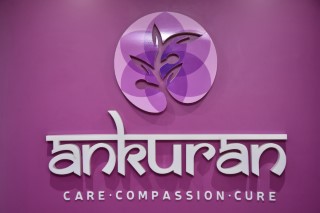What is Laser Assisted Hatching?
Laser Assisted Hatching is a lab technique frequently used with in vitro fertilization. The purpose of this procedure is to facilitate the embryo’s hatching process and improve its chances of implantation.
Fertilized eggs for IVF are kept in a lab for 2-5 days to develop into embryos. A healthy embryo is then implanted into the uterus. The embryo is surrounded by a protective layer, known as the zona pellucida, that must break down for implantation to occur. If this layer becomes too rigid, the embryo can’t hatch or implant, leading to infertility.
To aid implantation, laser-assisted embryo hatching involves creating a tiny crack in the embryo before placing it in the uterus. This method, assisted hatching IVF, aids in implantation, which ultimately results in a healthy pregnancy.
In the event that a couple does not transfer an embryo to the uterus within a given cycle, they may choose to cryopreserve it for possible future usage. This preservation method involves a cycle of freezing and thawing, which may disrupt the blastocyst’s natural hatching process. When a blastocyst is placed onto the uterine lining after undergoing laser assisted embryo hatching IVF, the embryo is able to implant effectively since the outer shell has been loosened.
Who is Laser-Assisted Hatching Recommended for?
Doctors recommend laser-assisted hatching when:- Women are 37 years old or older.
- Women have a high concentration of follicle-stimulating hormone.
- IVF attempts have been unsuccessful before.
- The zona may have thickened because the embryo has been frozen and thawed.
- stimulated by follicle-stimulating hormone (FSH)
- Develop a zona pellucida that is often thicker and/or tougher
- Embryos are of poor quality or have delayed development among women
The prospects of starting a family need not be forsaken. Presently, certain scenarios—though not universally—grant women, diagnosed with cancer, the choice to safeguard their fertility through egg or embryo cryopreservation prior to cancer therapy, while men are afforded the chance to preserve sperm.
When is Laser-Assisted Hatching Recommended For?
- Anyone getting IVF treatment can benefit from Laser Assisted Hatching and increase her chances of getting pregnant during that time.
- When zona pellucid is anticipated to be strong and thick, laser-assisted hatching is very useful.
- Embryos from donors who had their eggs frozen and then thawed.
- Embryonic blastomere biopsies for Preimplantation Genetic Testing (PGT) cannot be performed without laser Assisted Hatching first.
Why Choose Laser-Assisted Hatching?
Potential for Implementation
The blastocysts created by the laser hatching process are of higher quality than those created by conventional thawing. At Ankuran, we support laser assisted hatching in IVF as a means of promoting implantation in order to increase the success rate of in vitro fertilization (IVF) cycles.
Benefit From Embryo Cryopreservation
Cryopreservation is a cutting-edge method that can keep your embryos viable for up to ten years. The embryos’ viability depends on how thoroughly they are stored and thawed. If not handled carefully, the embryo’s protective shell could sustain damage. Cryopreservation can be put to good use with the ability to micromanipulate an embryo through laser-assisted embryo hatching.
Laser-Assisted Hatching Procedure
There is widespread agreement amongst experts throughout the world that laser-assisted hatching is a safe and effective technique. The process follows a step-by-step procedure. Let’s see what they are:
- The laser hatching process is done when the embryo is in the lab (usually on Day 3) as part of an IVF or ICSI treatment.
- The zona pellucida (the outer coat of the embryos) is punctured with a laser specifically designed for LAH and approved by the Food and Drug Administration.
- A region of the zona pellucida is chosen, one that is not directly adjacent to the embryo’s genetic material or its cells.
- A few laser shots can crack the embryo’s protective layer. The laser is fired from a safe distance to avoid harming the embryo’s cells.
- This procedure takes only a few seconds per embryo, reducing the time they spend outside the incubator.
- Embryos are transferred in an IVF lab. The patient is not harmed or uncomfortable during the process.
- The embryos are subsequently placed into the uterus, as is customary with in vitro fertilization.
Advantages of Laser-Assisted Hatching
There are several reasons why laser-assisted hatching is preferable to chemical and manual methods.
- It raises the pregnancy success rate from the current average of 60% to 80%.
- Minimal embryo handling
- This method is fully automated and does not require any human intervention.
- Drilling the opening of the shell is quick and precise
- It has no harmful impact on the developing embryo.
- Due to the laser’s pre-programming, the procedure is precise.
- Widely available to patients and provided under clinical guidance based on your individual needs
What To Expect Throughout the Laser-Assisted Hatching Procedure?
From the point of view of the patient, there is no distinction between IVF/ICSI and IVF/ICSI with Laser Assisted Hatching. The embryo is treated, and the embryo is transferred, just like in a regular IVF round.
Risks Associated with LAH
Laser-assisted hatching (LAH) carries two primary risks.
The Chance of Having Twins Increases
Although no evidence supports it, one school of thought holds that assisted hatching can increase the likelihood of monozygotic twinning.
The best method to lessen these dangers is to get treatment from a reputable clinic with a history of satisfied patients. There have been no reported negative side effects of laser-assisted hatching in any of our patients or their offspring.
Success Rates of Laser-Assisted Hatching
The success of implantation, pregnancy, and birth are all increased. Women who have tried IVF multiple times without success now have a good chance of becoming pregnant through laser assisted hatching in IVF. Before proceeding, it’s best to discuss it with a doctor. Laser assisted hatching success rates vary from clinic to clinic.

